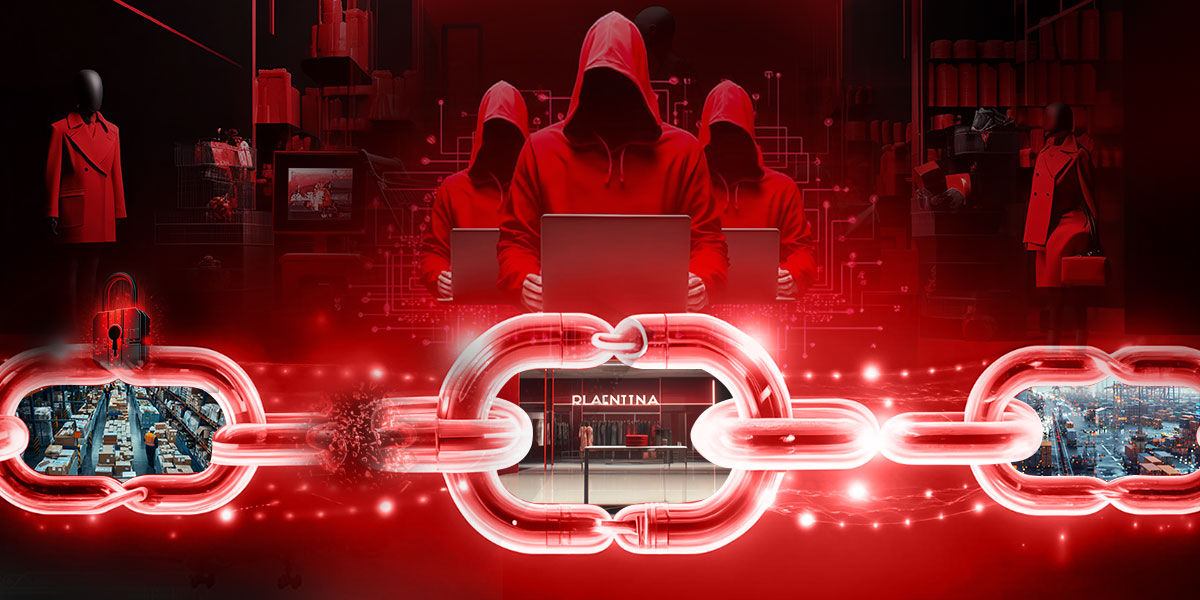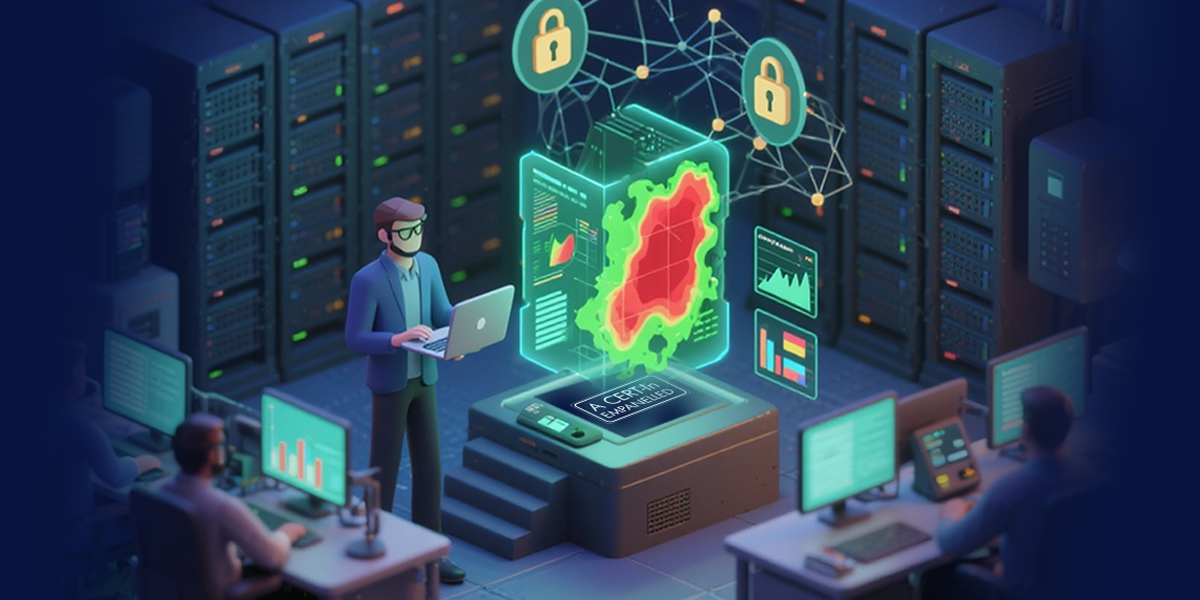The first half of 2025 has seen an alarming spike in ransomware and data theft operations, fundamentally altering the cyber threat landscape for high-value retail. Cybercriminals are no longer content with mere customer databases; their sights are now squarely set on the operational arteries of the entire ecosystem. This pivot ingeniously exploits the inherent weaknesses of these supply chains: the frequent presence of substandard cybersecurity among smaller, specialized partners, a veritable goldmine of shared, sensitive data, and the intrinsic reliance on trust for seamless global operations. These converging factors have culminated in a perfect storm, allowing ransomware to ripple with devastating effect through networks once believed impenetrable. Grasping this profound shift isn’t merely advisable; it’s an absolute necessity for every organization woven into the luxury supply chain to safeguard its operations, hard-won reputation, and, most critically, customer trust.
The Evolving Threat Landscape: Ransomware’s New Supply Chain Frontier
The narrative of luxury brands under siege has undergone a rapid transformation. What began as a series of direct, high-profile attacks has now morphed into a stark, critical examination of their intricate, globally dispersed supply chains.
From Brand to Ecosystem: Re-evaluating the Attack Surface
Historically, cybersecurity has largely confined its focus to fortifying the core enterprise. Yet, the brutal surge in 2025 attacks vividly demonstrates that an organization’s attack surface stretches far beyond its immediate digital or physical boundaries. It now encompasses every single vendor, partner, logistics provider, and every piece of third-party software or service integrated into its daily operations. For luxury brands, this means that their raw material suppliers, manufacturing facilities, shipping giants, payment processors, customer service centers, and even their marketing agencies all represent potential entry points for sophisticated ransomware groups. The very trust that enables these operational relationships to function smoothly is precisely what cybercriminals are now ruthlessly exploiting, transforming a single compromised entity into an open gateway for widespread disruption and debilitating data theft.
Read More: Why Every Business Needs An Incident Response Plan
The Adidas Breach: A Case Study in Third-Party Vulnerability
The incident involving Adidas in May 2025 stands as a quintessential illustration of this pervasive supply chain vulnerability. While Adidas itself was ultimately the victim, the breach of customer contact information didn’t originate from a direct assault on Adidas’s internal systems. Instead, it stemmed from a compromised third-party customer service provider. This was not a frontal attack, but rather a cunning exploitation of a trusted partner. The ramifications are profound: even a brand with seemingly impregnable internal defenses can be laid bare by the weakest link in its sprawling, extended network. This incident drove home several critical, undeniable lessons:
- Interconnectedness amplifies risk. The more links in your chain, the more points of failure.
- Trust in partners must be underpinned by rigorous security vetting. Blind trust is a luxury no brand can afford.
- Third-party compliance is as vital as internal security. It’s a shared responsibility.
Coordinated Campaigns: Shared Weaknesses, Systemic Risk
The sheer concentration of attacks, particularly on prominent UK retailers such as Harrods, Marks & Spencer, and Co-op, strongly suggested more than mere opportunistic strikes. Security researchers now largely believe that these were either part of coordinated campaigns or the systematic exploitation of shared vulnerabilities among retailers that leveraged common infrastructure or service providers. This carries a chilling implication: an attacker doesn’t necessarily need to breach each brand individually. Compromising a widely used logistics platform, a shared payment gateway, or a common cloud service provider can grant sweeping access to multiple high-profile targets simultaneously. This systemic risk absolutely necessitates collective defense strategies and a far greater degree of visibility into the entire supply chain’s cybersecurity posture.
Prominent Threat Actors & Their Supply Chain Playbook
The groups orchestrating these sophisticated attacks are far from opportunistic; they are highly organized, relentlessly financially motivated, and increasingly specialized, focusing on dismantling the very fabric of global commerce.
Scattered Spider: Social Engineering Their Way In
Known also as UNC3944 or Octo Tempest, Scattered Spider has rapidly emerged as a particularly menacing force. Their playbook is a masterclass in social engineering, expertly leveraging human psychology to breach even robust defenses. For supply chain attacks, their tactics are acutely effective:
- Vendor Impersonation: They meticulously register domains that convincingly impersonate legitimate technology vendors, crafting highly persuasive phishing attempts aimed at system administrators and executives within supply chain companies.
- Help Desk Manipulation: Their fluent English-speaking capabilities and deep cultural familiarity allow them to expertly manipulate help desk personnel, often convincing them to reset passwords or grant elevated access to critical systems utilized by multiple brands.
- Ransomware Partnerships: Scattered Spider doesn’t always deploy the final payload itself. Instead, it strategically partners with major ransomware operators, such as ALPHV, RansomHub, and DragonForce. This means their initial access, gained by socially engineering a supplier, can swiftly escalate to a large-scale ransomware deployment, crippling an entire brand’s operations.
DragonForce & Qilin: Disrupting the Chain
While Scattered Spider excels at initial access, groups like DragonForce (with its unsettling blend of hacktivism and ransomware) and the increasingly dominant Qilin ransomware group (which has seen a staggering 71.4% increase in activity in 2025) are the ones delivering the truly devastating payloads.
- Operational Disruption: When these groups target a critical logistics hub, a manufacturing facility, or an essential IT service provider within a luxury brand’s supply chain, the impact transcends mere data theft; it leads directly to an operational standstill, severely impacting production, distribution, and sales across the entire ecosystem.
- Reputational Damage: The inherently public nature of these attacks, often involving website defacements and the public leaking of stolen data, inflicts significant reputational damage not only on the immediate victim but, critically, on the luxury brands that rely on them.
Read More: Why Small Businesses Are The New Bullseye For The Threat Actors?
The Expanding RaaS Economy: Lowering Barriers for Supply Chain Attacks
The widespread proliferation of Ransomware-as-a-Service (RaaS) platforms has effectively democratized sophisticated attack capabilities. This means that even less technically proficient threat actors can now readily rent or subscribe to advanced tools, drastically lowering the barrier to entry for orchestrating complex supply chain attacks. The sheer ease of access to these powerful tools, combined with the undeniable profitability of targeting the luxury sector, ensures that supply chain ransomware will persist as a profound and continuously evolving threat.
The Ransomware Kill Chain: Exploiting Supply Chain Weaknesses
Understanding the step-by-step methodology employed by these attackers is absolutely crucial for implementing truly effective defenses. The kill chain, originally conceptualized for direct attacks, has been cunningly adapted to leverage the intricate, often trusting, relationships embedded within supply chains.
Initial Access: The Phishing & Vishing Trap
The initial breach most frequently exploits the human element within a supply chain partner. Attackers meticulously research their targets, crafting highly convincing lures:
- Spear-Phishing: Highly tailored emails, seemingly originating from trusted internal or external sources (e.g., a “supply chain update” from a known partner), containing cleverly disguised malicious links or attachments.
- Vishing (Voice Phishing): Impersonating IT support or even senior management from the parent brand to trick unsuspecting employees of a supplier into divulging sensitive credentials or granting critical access.
- Compromised Accounts: Gaining access through credentials stolen from a weaker, less secure supply chain partner, then leveraging those legitimate credentials to access interconnected systems with greater privileges.
Exploitation & Lateral Movement: Beyond the First Breach
Once initial access is secured, attackers move with calculated speed to expand their foothold and identify high-value targets within the broader supply chain network.
- Credential Harvesting: Tools like Mimikatz are deployed to dump credentials from compromised systems, enabling attackers to access other interconnected systems across the network.
- Lateral Movement: Utilizing legitimate remote access tools (e.g., RDP, SSH, SimpleHelp, AnyDesk) — which are common for administrative purposes across distributed supply chain operations — to move stealthily and avoid detection within networks.
- Defense Evasion: Deliberately disabling or modifying security tools on compromised systems to evade detection, thereby enabling continued, unhindered operations.
Impact: Disrupting Operations, Exfiltrating Data
The ultimate objective is to maximize impact, whether through outright data theft, widespread encryption, or complete operational disruption.
- Data Exfiltration: Sensitive customer data, invaluable intellectual property, or critical operational secrets are stolen from supply chain partners and then, frequently, publicly leaked if exorbitant ransom demands remain unmet.
- File Encryption: Ransomware is strategically deployed to encrypt critical files across the compromised network, crippling operations and demanding substantial payments for the decryption keys.
- Operational Standstill: The disruption can bring production lines, logistics, and customer service to a grinding halt, not just for the direct victim but also for the luxury brands they serve, leading to staggering financial losses and irreparable reputational damage.
Read More: Phishing 2.0: How AI Tools And Psychological Manipulation Are Revolutionizing Cybercrime
Critical Vulnerabilities within the Interconnected Ecosystem
The current surge in supply chain attacks is far from coincidental; it ruthlessly preys on specific, inherent vulnerabilities embedded within the modern, interconnected business model of luxury retail.
Digital Transformation’s Unintended Consequences
The rapid, often unbridled, adoption of e-commerce, pervasive cloud services, and diverse digital platforms by luxury brands and their myriad partners has inadvertently created an expanded, incredibly complex attack surface:
- Legacy System Integration: Older, often outdated systems, which are common in long-standing supply chain entities, frequently harbor significant security gaps when hastily integrated with modern digital platforms.
- Accelerated Deployment: The breakneck rush to digitize and innovate can, unfortunately, lead to security being an afterthought, leaving gaping vulnerabilities in newly deployed e-commerce capabilities and customer relationship management systems.
- Omnichannel Security: The daunting challenge of truly securing data as it flows seamlessly between physical stores, sprawling online platforms, and multiple third-party logistics providers creates inherently complex and easily exploitable security gaps.
The Third-Party Risk Multiplier
This is, without doubt, the most significant vulnerability. Every single vendor, every contractor, every service provider with any form of access to a brand’s data or network fundamentally represents an extension of its attack surface.
- Customer Service Providers: As vividly demonstrated by the Adidas incident, these entities handle highly sensitive customer contact information, making them prime, lucrative targets.
- Marketing Automation Platforms: These often hold vast repositories of customer data, crucial for targeted campaigns, making them highly attractive to cybercriminals.
- Payment Processors: They possess direct, critical access to financial transaction data, making any compromise catastrophic.
- Logistics & Warehouse Management Systems: These are absolutely critical for operational flow; a compromise here can literally halt the movement of physical goods.
- IT Managed Service Providers (MSPs): These often have deep, pervasive access to the core networks of multiple clients, making them exceptionally high-value targets for widespread, cascading attacks.
Customer Data: The High-Value Bait in the Supply Chain
Luxury brands cultivate high-net-worth customer bases, and their detailed purchase histories, intimate personal preferences, and financial capabilities are veritable goldmines for cybercriminals. When this invaluable data resides with or is even remotely accessible through a third party in the supply chain, it morphs into a dual threat:
- Direct Exploitation: Stolen data can be weaponized for sophisticated social engineering attacks or direct financial fraud against high-value individuals.
- Brand Relationship Abuse: Cybercriminals can leverage stolen customer data to craft incredibly convincing phishing attacks that appear to originate directly from the luxury brand itself, further compromising unsuspecting customers and eroding trust.
Fortifying the Supply Chain: Actionable Mitigation Strategies
Protecting your brand from these increasingly sophisticated and evolving threats requires a comprehensive, multi-layered cybersecurity strategy that extends unequivocally across your entire supply chain.
Proactive Vetting & Contractual Safeguards
Effective supply chain security begins long before any incident ever occurs.
- Enhanced Vendor Security Assessments: Conduct exhaustive due diligence that goes far beyond mere basic compliance checks. This must include:
- Regular, rigorous security audits and proactive penetration tests of all critical vendors.
- Thorough evaluation of their incident response capabilities and meticulously documented protocols.
- Assessing the maturity and effectiveness of their own third-party risk management programs.
- Robust Contractual Requirements: Implement ironclad legal clauses in all vendor agreements, mandating:
- Adherence to specific, measurable cybersecurity standards and controls.
- Strict, non-negotiable incident notification timeframes (e.g., within 24 hours).
- Crystal-clear liability allocation in the unfortunate event of a security breach.
- The explicit right to audit vendor security practices at any given time.
Robust Technical Controls Across the Ecosystem
Technical defenses are not just a recommendation; they must be aggressively deployed and rigorously enforced across your entire extended network.
- Implement Zero-Trust Architecture (ZTA): Extend Zero-Trust principles to all third-party integrations. This means verifying every single user and device attempting to access your network, irrespective of whether they are internal employees or part of a vendor’s system. Trust nothing, verify everything.
- Enforce Universal Multi-Factor Authentication (MFA): Mandate robust MFA (ideally hardware tokens or biometrics) for all accounts with any level of access to your systems, critically including those belonging to third-party users and their administrators.
- Granular Network Segmentation: Isolate critical customer data systems and meticulously segment networks connected to third parties. Micro-segmentation can further drastically restrict lateral movement within potentially compromised vendor environments.
- Advanced Email & Endpoint Security: Deploy next-generation antivirus (NGAV) and sophisticated endpoint detection and response (EDR) solutions across all your endpoints. Crucially, work collaboratively with vendors to ensure similar, high-level protection on their end. Implement advanced email security with behavioral analysis to proactively counter sophisticated phishing and vishing attempts.
- Data Loss Prevention (DLP) & Encryption: Deploy robust DLP solutions to continuously monitor and prevent sensitive data exfiltration across all shared platforms. Encrypt data both at rest and, critically, in transit, especially when it is transmitted through any third-party services.
Incident Response & Resilience Planning
Even with the most robust prevention measures, incidents are an inevitability. Preparedness is not merely key; it is paramount.
- Supply Chain-Specific Incident Response Plan: Develop and regularly test an incident response (IR) plan that specifically addresses compromises originating from or impacting third parties. This comprehensive plan must include:
- Clear, pre-defined communication protocols with affected partners.
- Explicitly defined roles and responsibilities for joint investigation and remediation efforts.
- Pre-agreed steps for immediate isolation and swift recovery.
- Business Continuity Planning (BCP): Meticulously account for disruptions that could be caused by cyberattacks on critical supply chain partners. This entails identifying:
- Viable alternative service providers.
- Manual processes for critical functions during a system outage.
- Thorough impact assessments for potential operational halts across the chain.
- Continuous Monitoring: Implement real-time security monitoring that extends beyond your internal network to include third-party connections and data flows. Leverage Network Traffic Analysis (NTA) and User Behavior Analytics (UBA) to detect and flag any anomalous or suspicious activity promptly.
Conclusion: A Call for Collective Defense
The 2025 ransomware surge has irrevocably altered the cybersecurity paradigm for luxury brands. The very battleground has shifted, and the most profound vulnerabilities now lie increasingly within the intricate and often opaque layers of their supply chains. Cybercriminals are intelligent, remarkably adaptive, and relentlessly persistent, always seeking out the path of least resistance.
Protecting brand reputation, invaluable customer data, and seamless operations in this new, perilous reality demands far more than just internal security. It absolutely requires an unwavering commitment to collective defense, extending robust cybersecurity practices, rigorous oversight, and proactive mitigation strategies across the entire ecosystem. By investing deeply in comprehensive supply chain security, luxury brands possess a transformative opportunity to convert their most significant vulnerability into a formidable, multi-layered defense, thereby safeguarding their enduring legacy and securing their future in an increasingly perilous yet interconnected world.











